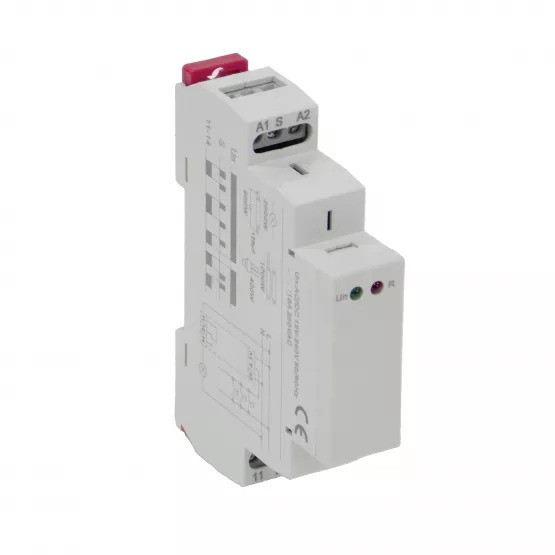Why Are Latching Relays the Key to Smarter and More Efficient Electronic Systems?

Strong 8k brings an ultra-HD IPTV experience to your living room and your pocket.
What Is a Latching Relay in Electronics?
A latching relay is a type of switch that maintains its position after being actuated, even when the control power is removed. Unlike traditional relays that require continuous current to hold a position, latching relays use a pulse to switch between states and remain latched until the next pulse is received. This functionality offers superior energy efficiency and long-term state retention, features increasingly valuable in today’s innovative and low-power electronic systems.
In electronic design, latching relays play a critical role in automation, energy management, and signal control applications. Their unique design helps eliminate the need for constant power, making them essential for battery-powered devices, memory-based operations, and digital logic systems.
How Does a Latching Relay Work Internally?
Latching relays operate using an internal mechanical or magnetic latch mechanism that physically holds the relay contacts in place. Depending on the design, the relay may use one or two coils:
- Single-Coil Latching Relays: Operate by reversing the polarity of a single coil. One polarity sets the relay, and the opposite polarity resets it.
- Dual-Coil Latching Relays: Use two separate coils—one for setting and another for resetting. A brief pulse to either coil changes the relay’s state.
The contacts remain in their last position indefinitely, even when the power supply is interrupted. This makes them ideal for critical switching applications where state retention is mandatory.
Where Are Latching Relays Commonly Applied?
Thanks to their power-saving capabilities and stable switching characteristics, latching relays are deployed in a broad range of industries and devices:
- Energy Meters: Maintain status during outages, reducing energy draw.
- Home Automation: Control lighting, fans, and appliances without constant power.
- Industrial Control Panels: Offer reliable switching in automation systems.
- Security Systems: Hold alarm or lock states after a trigger event.
- Telecom Equipment: Enable line switching with reduced power loads.
- Automotive Systems: Manage lighting, wipers, and auxiliary controls.
- Renewable Energy Systems: Used in solar panels and battery storage setups.
Their compatibility with both AC and DC circuits further increases their versatility across different voltage environments.
What Are the Primary Advantages of Latching Relays?
Latching relays offer a host of benefits that make them a top choice for modern designers and engineers looking to optimise energy consumption and device performance:
- Power Saving: Uses energy only during the switching pulse, not while maintaining position.
- Heat Reduction: No coil heating during idle states leads to safer operations.
- State Retention: Maintains the last known state during power outages or resets.
- Compact Design: Smaller and lighter compared to similar electromechanical options.
- Extended Lifespan: Lower actuation frequency improves mechanical durability.
- Silent Operation: Especially useful in solid-state and home automation variants.
These benefits contribute to long-term energy savings, reliable operation, and low-maintenance switching solutions in innovative electronic systems.
What Types of Latching Relays Are Available?
Latching relays are available in multiple types to suit specific system requirements, contact ratings, and environmental conditions. Common variants include:
- Electromechanical Latching Relays: Standard design with magnetic or mechanical latching.
- Reed Latching Relays: Small and fast-acting, ideal for signal switching and instrumentation.
- Solid-State Latching Relays: Use semiconductors instead of mechanical parts; excellent for high-speed or low-noise operations.
- Polarised Latching Relays: Utilise a permanent magnet to improve efficiency and precision.
Choosing the correct type depends on the load type, switching frequency, voltage level, and mechanical constraints of your design.
How to Select the Right Latching Relay for Your Project?
When selecting a latching relay, it is crucial to match the technical parameters to your application's needs. Consider the following key factors:
- Coil Voltage: Make sure the relay's coil matches your circuit's control voltage.
- Contact Rating: Evaluate the current and voltage that the contacts must handle.
- Switching Logic: Decide between single-coil and dual-coil operation based on control logic design.
- Contact Arrangement: Choose from SPST, SPDT, DPDT, and others depending on circuit requirements.
- Mounting Style: Select from PCB, DIN rail, or panel mount options based on installation space.
- Environmental Tolerance: Ensure the relay can withstand temperature, vibration, and humidity if used in harsh conditions.
Selecting the right relay ensures safe and efficient performance, particularly in embedded electronics, automation controllers, and IoT platforms.
How Are Latching Relays Used in Smart and Embedded Systems?
Latching relays integrate seamlessly with microcontroller-based and embedded systems, where energy efficiency and logic-level switching are essential:
- Digital Pulse Control: Easily driven by GPIO pins on microcontrollers using brief logic pulses.
- Timer-Based Systems: Work with digital timers to automate scheduled switching tasks.
- Sensor Integration: Trigger relays based on input from motion, temperature, or current sensors.
- Low-Power Circuits: Reduce the energy drain in battery or solar-powered applications.
- Remote Switching: Compatible with wireless modules for IoT-based remote control.
Their ability to interface with digital logic, sensors, and remote control systems makes latching relays a preferred choice for modern automation designs.
Why Are Latching Relays Popular in Energy-Efficient Applications?
With global emphasis on energy conservation and sustainable technology, latching relays have become indispensable in reducing energy consumption and improving circuit reliability:
- Smart Grids: Used in metering systems to manage electrical loads and maintain operational state.
- Green Buildings: Control lighting and ventilation systems with zero standby current draw.
- IoT Devices: Enable remote operation of devices with minimum energy use.
- Portable Electronics: Maximise battery life in compact, mobile devices.
- Alternative Energy Sources: Manage system switching in solar and wind-powered installations.
Their role in energy management, grid intelligence, and self-sustaining systems continues to expand as the world transitions to more brilliant, greener infrastructure.
Conclusion: Should You Integrate Latching Relays in Your Design?
If your project demands efficient switching, energy savings, and memory retention, latching relays offer a robust solution. They require only minimal power input, hold their state indefinitely, and support a wide range of voltage and current ratings.
From home automation and renewable energy systems to industrial controls and portable devices, latching relays deliver performance, reliability, and efficiency in equal measure. As industries strive for more innovative and sustainable electronics, the integration of latching relays becomes not only beneficial but also essential.
Note: IndiBlogHub features both user-submitted and editorial content. We do not verify third-party contributions. Read our Disclaimer and Privacy Policyfor details.







